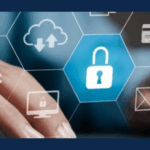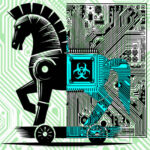5 Ways Your systems can be breached
When it comes to business IT security, many small- to medium-sized businesses (SMBs) often struggle to protect their systems from various cyberattacks. While there are many things you can do to secure your IT infrastructure, being aware of common security threats will really help. Here are five common ways your systems can be breached.
You are tricked into installing malicious software
One of the most common ways a system’s security is breached is through downloaded malware. In almost every case, the user was tricked into downloading it.
Hackers are known to plant malware in software hosted on warez and torrent websites. When users visit the site, they are instructed to download the software for the site to load properly. Once downloaded, the malware infects the system. In other cases, hackers send emails with a malware-infected attachment.
There are steps to avoid being tricked into downloading malware:
• Never download files from an untrusted location. If a website is asking you to download something, make sure it’s from a company you know and trust. If you are unsure, it’s best to avoid downloading.
• Always look at the name of the file before downloading. A lot of malware is often disguised with names that are similar to legitimate files, with a slight mis-spelling or weird wording. If you are unsure, don’t download it. Contact us so we can verify its authenticity.
• Stay away from torrents, sites with adult content, and video streaming sites. These sites often contain malware, so avoid them altogether.
• Always scan a file before installing it. Use your antivirus scanner to check downloaded apps before opening them. Most scanners are equipped to do this by right-clicking the file and selecting “Scan”.
Hackers modify the operating system (OS) settings
Many users are logged into their computers as administrators – allowing you to change settings, install programs and manage other accounts.
If a hacker manages to access your computer with you as the admin, they have full access to your computer and could install other malicious software, change settings, or even hijack the machine. If a hacker gets access to a computer used to manage the overall network, they could gain control of the entire network and do as they please.
• Limit the administrator role to users who need to install applications or change settings on the computer.
• Install security software like antivirus scanners and keeping them up to date, as well as conducting regular scans, will help reduce the chances of being infected, or seeing infections spread.
Someone physically accesses your computer
There are many instances when malware is introduced, or data is stolen, because someone has physically accessed your systems.
Let’s say you leave your computer unlocked when you go for lunch and someone plugs in a malware-infected USB drive, and physically infects your system. They could also access your system and manually reset the password, locking you out and giving them access.
• Set up a password to control access to your computer. You should also lock, turn off, or log off from your computer whenever you step away from it.
• Disable drives like CD/DVD and USB if you don’t use them. This will prevent anyone using these media to infect your computer.
Someone from within infects the system
Disgruntled employees could delete essential data, or remove it from the system completely. Some have even introduced highly destructive malware. The most effective way to prevent this, is to limit access to systems.
• Re-examine what your employees have access to and make necessary adjustments. For example, you may find that people in marketing have access to finance files or even admin panels.
• Revoke unnecessary access rights and ensure that employees only have access to the files they need.
Your password is compromised
Many people have weak passwords and/or use the same password for multiple accounts. With the steady increase in stolen user account data, it could only be a matter of time before they crack your password and compromise your account. This could lead to a massive breach.
• Use strong and different passwords for your accounts.
• Utilize multifactor authentication (MFA), which uses more than one method of verifying a user’s identity, such as a fingerprint or a one-time code.
If you are looking to learn more about securing your systems, contact Ashton Technology Solutions today to learn how we can help.





